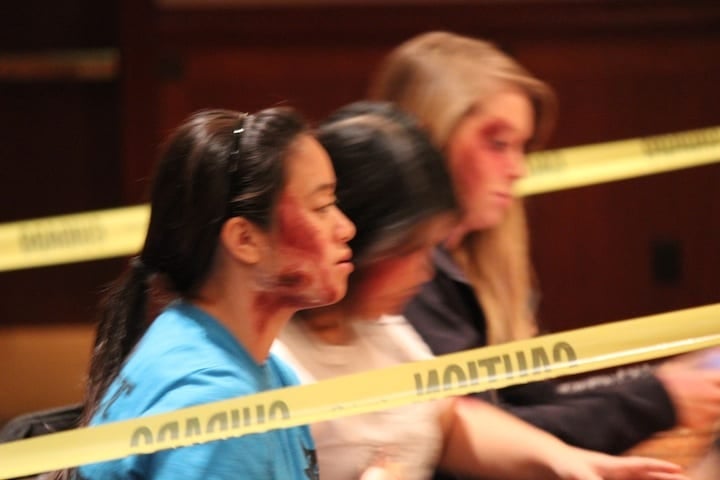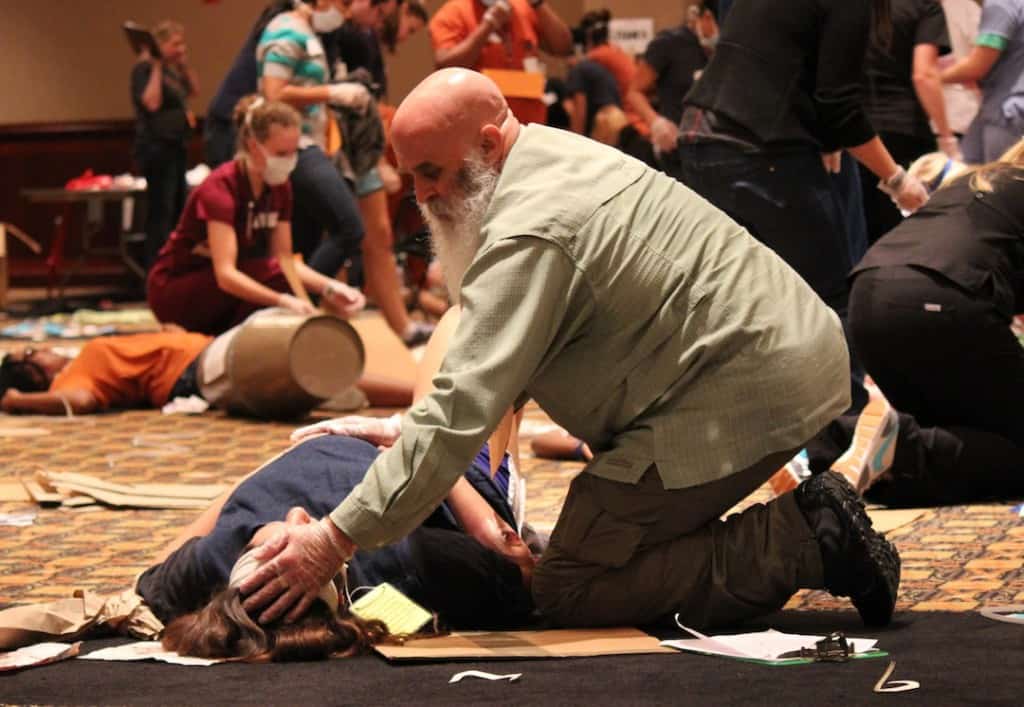
A tornado has just hit a big-box store. Victims covered with debris moan on the floor, in a chaos of upturned furniture and broken containers. Community Emergency Response Teams (CERT) burst onto the scene and quickly spread out, assessing damage, triaging victims, and treating the injured.
This scene was actually a mock disaster drill held at the Frank Erwin Center last Thursday September 26th.
Both victims and rescuers were student volunteers from The University of Texas at Austin Schools of Nursing and Social Work. Students played their parts under the watchful eyes of instructors from the School of Nursing, who walked around observing and providing guidance.
The drill is one component of a plan for all-hazard disaster preparedness, response and recovery created and implemented by the city of Austin in collaboration with the Schools of Nursing, Pharmacy, and Social Work.
Faculty and students from the School of Nursing held the first mock disaster drill in 2012.

For this year, the School of Social Work Disaster Mobilization Committee, chaired by Dr. Cal Streeter, facilitated the participation of social work students. Kathy Armenta, Clinical Associate Professor and committee member, coordinated the outreach effort to School faculty and students.
Approximately thirty social work students volunteered for the drill. Most of them came from two courses with a connection to disaster preparedness: Crisis Intervention and Social Work and Health Care.
“The goal for the students in the Crisis Intervention class was to participate in an activity that demonstrated a community response to a public disaster,” said Suze Miller, a longtime adjunct faculty member who teaches both courses. “For the students in my Social Work in Health Care class, the goal was for them to work in teams with healthcare professionals, just as they will when employed in community medical settings. I think it was wildly successful.”
There were 10 CERT teams in the drill this year, more than double from last year.

Volunteer students received training in CERT principles, including safety, personal preparedness, triage and medical operations in a mass casualty situation such as basic wound care, victim carry, and splinting and immobilization of injuries.
Keith Montgomery was one of the student volunteers from the School of Social Work.
“My first thought when we got in the room was what a mess,” said Montgomery. “But I felt prepared and confident that our team could make a difference and give assistance to the victims. Interdisciplinary team work is definitely key to a positive outcome during an emergency event and triage-treatment scenario.”
Posted September 30, 2013

